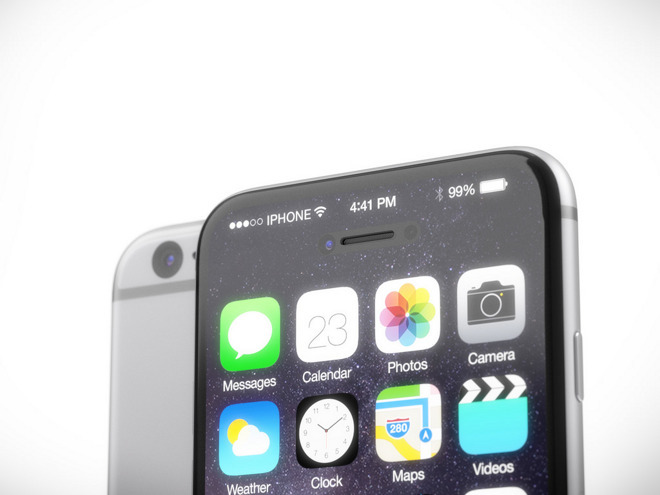Taiwanese firm Mirle Automation has developed forming machinery for curved glass chassis that should put it in the supply chain for Apple's 2017 iPhones, a report said on Wednesday.
The Mirle equipment should be shipped to Foxconn and Lens Technology starting in the fourth quarter of 2016, according to the Chinese-language Commercial Times, quoted by DigiTimes. Foxconn is Apple's main manufacturing partner.
The Times added that Foxconn's glass chassis has already gone through Apple verification, and that Lens Technology and Bern Optics will allegedly join Foxconn as iPhone chassis suppliers.
Unlike the "iPhone 7", which is expected to be another interim update when it's announced on Sept. 7, next year's flagship iPhone should be a major redesign, featuring a glass back and an edge-to-edge OLED display, possibly integrating camera and Touch ID components. Recently Nikkei suggested that there will be three models, one of which will use a curved OLED screen similar to Samsung's Galaxy S7 Edge.
Even if some components are already being approved, Apple is only likely to ship its 2017 iPhones in the fall. Beyond launch window considerations, the company often takes time to settle on a final design, and has to both order components and allow for two to three months of assembly so it has enough launch-day inventory.
 Roger Fingas
Roger Fingas








 Marko Zivkovic
Marko Zivkovic
 Christine McKee
Christine McKee
 Andrew Orr
Andrew Orr
 Andrew O'Hara
Andrew O'Hara
 William Gallagher
William Gallagher

 Mike Wuerthele
Mike Wuerthele
 Bon Adamson
Bon Adamson


-m.jpg)



8 Comments
Any mention of DigiTimes ruins the story for me and I immediately discount the entire thing.
Wasn't the iPhone 4 made with a glass back? Perhaps the design will take cues from that model which I consider still the best designed form (easy to hold and pickup from a table). I assume there will be some band of metal holding the glass in place which would allow for a charging connection and the current group of buttons. I never liked the shape of the Samsung high end model looks clumsy so I doubt Apple would not take cures from that ugly thing,
Curved glass adds exactly what to the user experience? Seems like another silly dead end like curved panel TVs. (Curved screens only make sense in theatres where the size differential between viewer and screen is huge.)